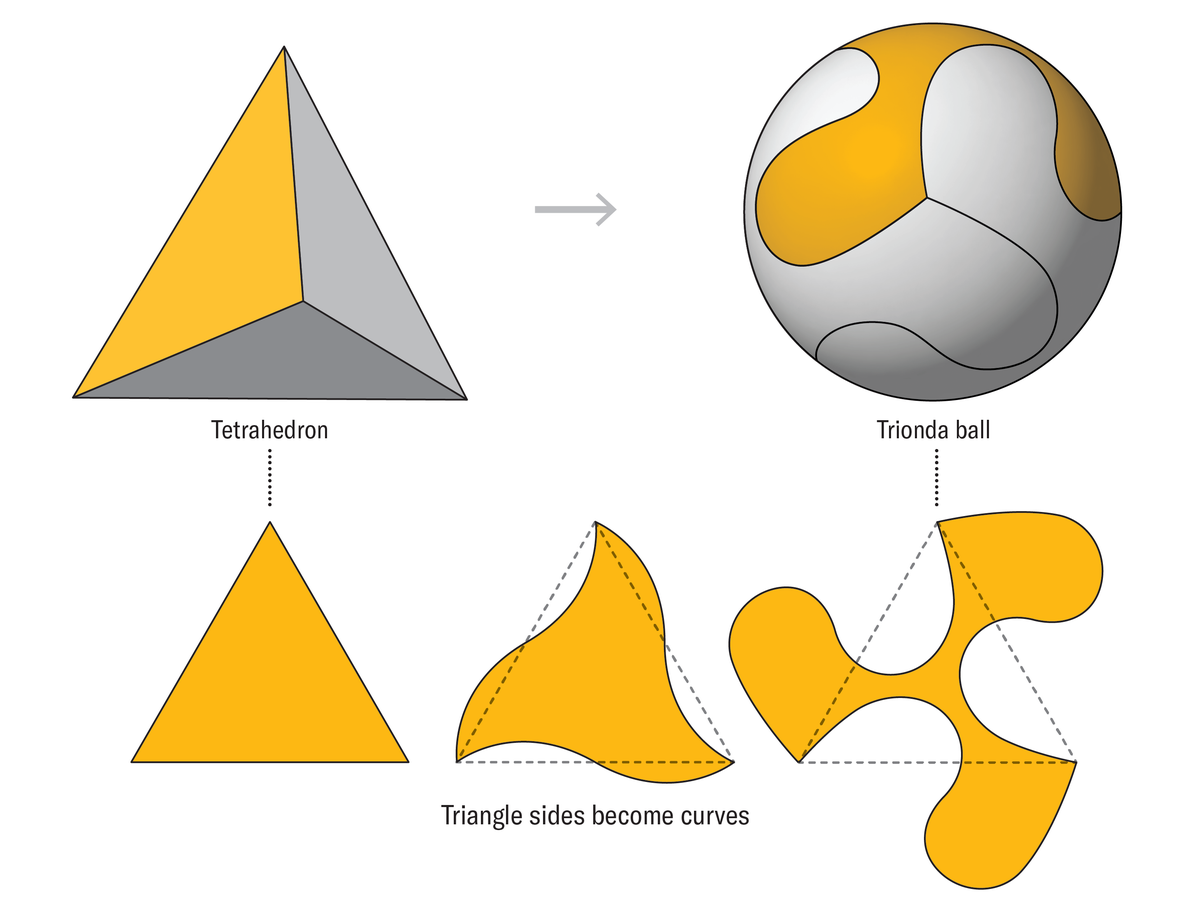Football, often lauded for its beautiful simplicity, hinges on one fundamental element: the ball. While seemingly a straightforward sphere, the official match ball for a FIFA World Cup is, in fact, a culmination of years of meticulous research, cutting-edge technology, and relentless testing. For the upcoming 2026 tournament, hosted across the vast landscapes of the U.S., Canada, and Mexico, Adidas unveils Trionda – a ball designed not just to play the game, but to advance it.
A Name with Roots, A Design with Purpose
The name “Trionda” itself is a nod to its expansive home. “Tri” symbolises the three host nations, visually represented by the colours of their respective flags – blue for the U.S., red for Canada, and green for Mexico. “Onda,” the Spanish word for wave or vibe, finds expression in the ball`s curved design pattern, hinting at the dynamic energy and cultural confluence of the region. However, its true marvel lies not in these visible aesthetics, but in the unseen innovations engineered within its very core.
The Ultimate Climate Conqueror
The 2026 World Cup presents an unprecedented logistical and environmental challenge: 16 host cities, stretching from the temperate Pacific Northwest to the high altitudes of Mexico City, each boasting distinct climates in June and July. This geographical diversity demands a ball capable of performing consistently under a myriad of conditions – varying humidity, altitude, and temperature. Adidas, acutely aware of this, engineered Trionda with a specific texture featuring an enhanced grip. The goal? To ensure that whether played in Vancouver`s coastal air or Mexico City`s thin atmosphere, the ball feels uniformly responsive at a player`s feet.
“We know that we have 16 host cities and we wanted to ensure that this ball works everywhere,” explained Solene Stormann, Adidas` global category director of football hardware. “We wanted to test against those criteria and make sure this ball works.”
This commitment to climate adaptation wasn`t theoretical. Trionda underwent rigorous testing in controlled environments before facing real-world trials across seven of the host cities. Players from professional leagues, including MLS` Vancouver Whitecaps and Liga MX`s Tigres, provided crucial feedback, validating its performance across diverse settings.
The Brain Inside: AI for Unprecedented Insights
Building on the innovations of its predecessor, the Al Rihla from Qatar 2022, Trionda incorporates an even more refined AI-powered chip. This embedded sensor, now strategically placed in the ball`s side, is not merely a tracking device; it`s a conduit for a new era of football analytics. Designed to deliver real-time insights and data, this system promises to:
- Enhance Referee Decisions: Provide officials with objective, instantaneous data, leading to more accurate and faster rulings on contentious plays.
- Fuel Future Innovation: Offer Adidas invaluable metrics on ball performance and player interaction, informing the design of subsequent generations of match balls.
- Unlock Deeper Game Understanding: Track previously unquantifiable elements like touch frequency during a dribble, offering coaches and analysts a granular view of tactical evolution.
Hannes Schaefke, Adidas` football innovation lead, highlighted the significance: “The ball was sort of the last frontier because it was super hard to track this from an optical standpoint, almost impossible. Having all tracking unlocked is a huge, huge promise for the future.”
A Legacy Forged in Rigorous Testing
The journey of a World Cup ball from concept to pitch is fraught with challenges, and Adidas has learned from the past. Memories of the “disastrous” Jabulani ball from 2010 and the “unpredictable” Telstar 18 from 2018, both criticised by goalkeepers for their erratic trajectories, have instilled an unparalleled dedication to testing.
Trionda proudly carries the mantle of “the most tested ball we’ve ever had.” Its development involved a multi-pronged approach:
- Scientific Laboratory Analysis: In-house robo-testing simulates countless scenarios, while collaborations with external partners like Loughborough University utilise advanced wind-tunnel tests. These scientific checks meticulously assess aerodynamic criteria such as in-flight stability, launch and in-flight speed, swerve, and precision.
- Panel Perfection: A shift from Al Rihla`s 20 geometric panels to Trionda`s four fluid panels isn`t just aesthetic. The panel shape, seam length, and debossing lines are precisely arranged to optimise aerodynamics, ensuring a predictable and stable flight path.
- Player Validation: Crucially, the scientific data is always cross-referenced with human experience. Amateur and professional players alike put Trionda through its paces, providing invaluable feedback on its perceived performance. After all, a ball must not only perform well in a lab but also feel right to the athletes who wield it.
Anticipating the Future of the Beautiful Game
The Trionda is more than just a piece of equipment for the 2026 World Cup; it is a statement about the future of football. It embodies a philosophy where tradition meets technological advancement, ensuring the core simplicity of the game remains, while its periphery is enhanced by precision and data. National teams will have access to Trionda for training several months before the tournament, giving them ample time to familiarise themselves with its unique characteristics.
As the first whistle blows on June 11, the Trionda will assume its role as the silent, yet incredibly sophisticated, heart of the tournament. It’s a testament to how far a “simple” round object can evolve when driven by innovation, promising a World Cup where every kick, every pass, and every goal is underscored by engineered excellence.

